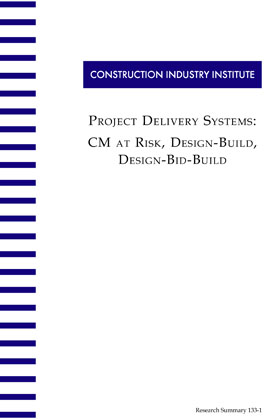
Project Delivery Systems: CM at Risk, Design-Build, Design-Bid-Build
A project delivery system defines the relationships, roles and responsibilities of project team members and the sequence of activities required to provide a facility. Several systems have evolved over the years. Construction management at risk, design-build and design-bid-build are three principal project delivery systems used in the U.S. today. This research presents an empirical comparison of the cost, schedule and quality attributes of these project delivery systems, using data from 351 U.S. building projects.
The study included collecting, checking and validating industry data, significance testing of univariate comparisons and the statistical development of multivariate linear regression models. A non-response study verified statistically that sample data was appropriate for analysis and representative of the industry from which it was drawn. Significance testing and multivariate comparisons used nearly 100 explanatory and interacting variables to explain project cost, schedule and quality performance. Several variables critical to project performance were also identified. Relationships between these variables and key performance metrics were identified through analysis of multivariate linear regression models.
An understanding of these relationships can help owners better select the project delivery system most suited for their specific facility goals. Specific comparisons between delivery systems, performance metrics and six facility classes are discussed. Results and the level of confidence that surrounds each finding are presented. Furthermore, this study provides quantitative data to support the selection of a specific delivery system and greatly increases the understanding of individual system performance.



